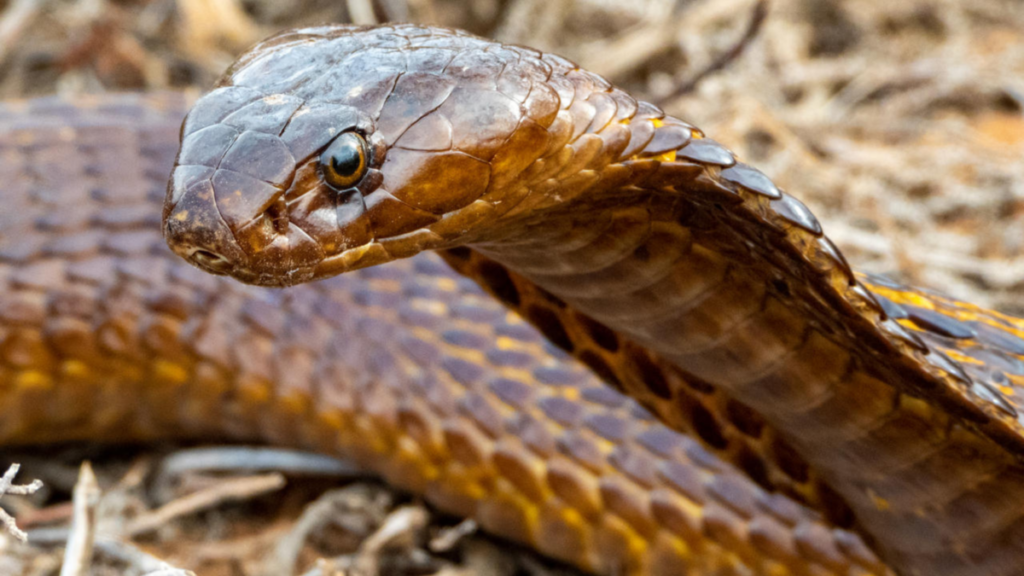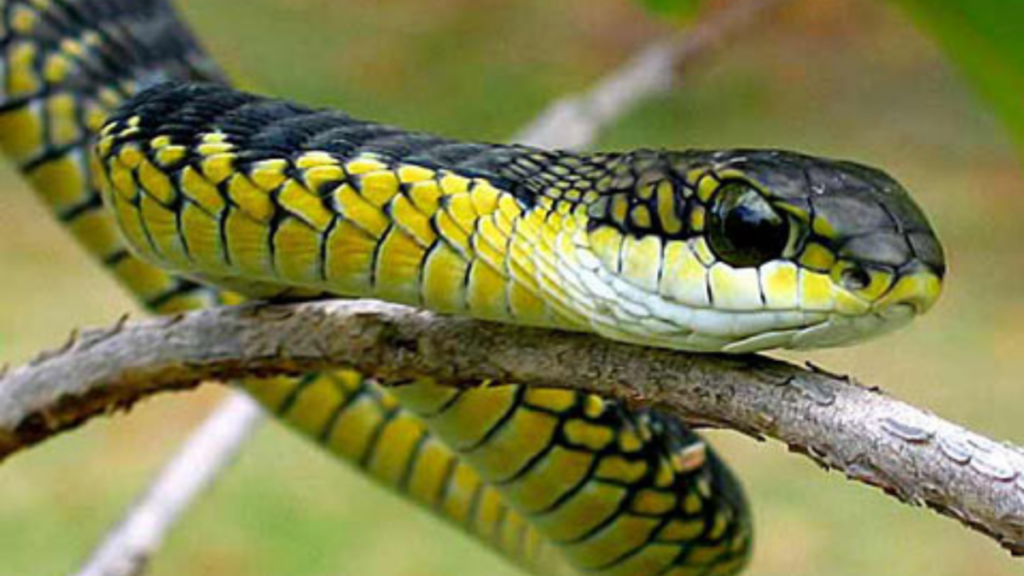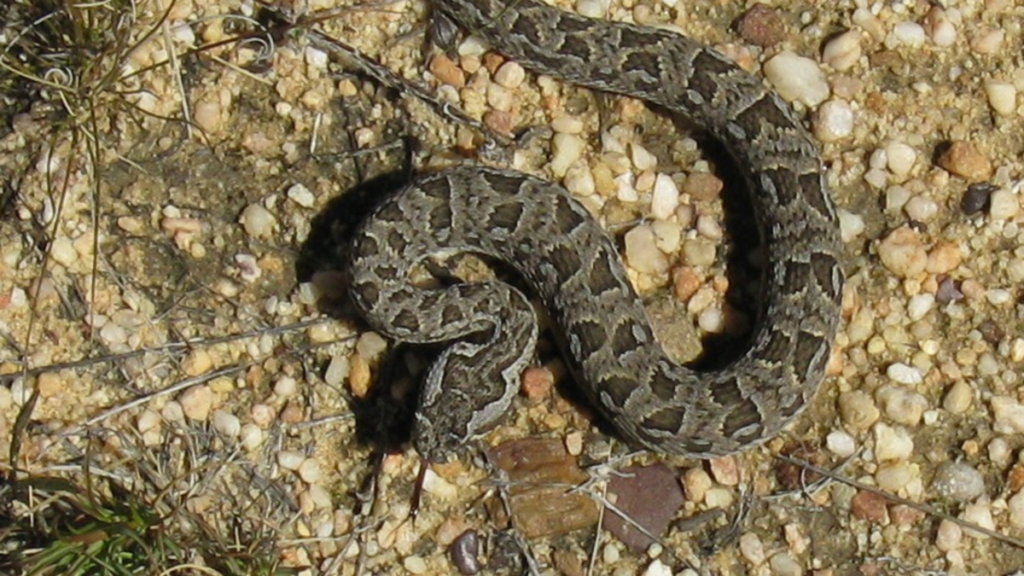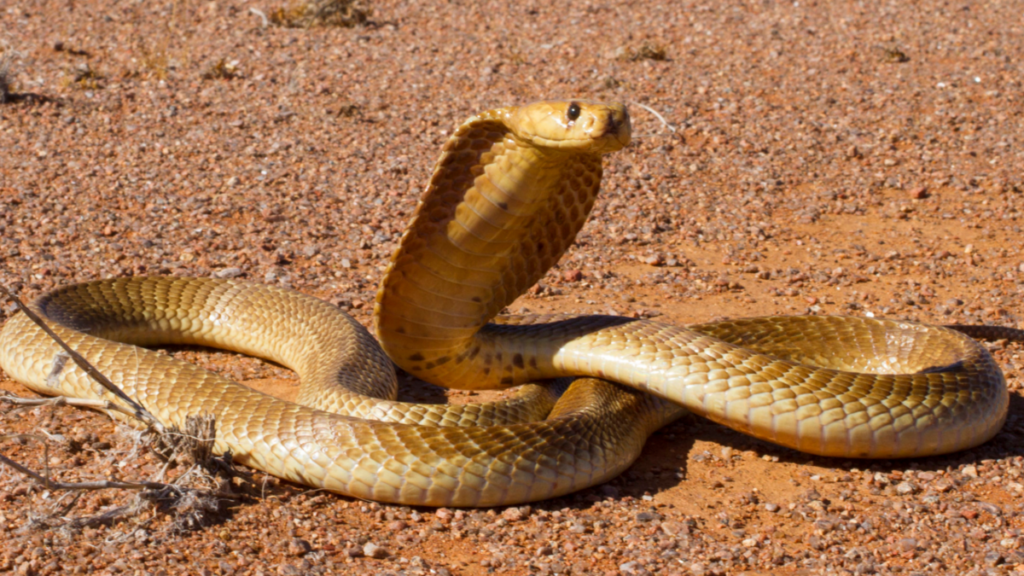
The more time we spend out in nature the greater our chances of encountering snakes. This is even more true when we head out into wild places. I have had numerous encounters with snakes over the years, both of the harmless and venomous varieties. All of those encounters have been positive experiences because I kept a few basic principles in mind.
Snakes seek to avoid humans and will not attack unless provoked or cornered. When running our foot strike causes vibrations that alert snakes to our approach and they will escape to safety. When walking, use hiking poles to create additional vibrations to compensate for your lighter footfall.
Let’s look more closely at the practical methods that you can use to avoid snakes while trail running based on my personal experiences over the years.
How To Avoid Snakes While Trail Running?
When you go on a trail run, you immerse yourself not only in the beauty of nature but also in the habitat of wildlife. The wildlife animals that you may encounter while trail running are many. These could include bears, mountain lions, moose, elks, birds, insects, squirrels, and of course, snakes.
Even though snakes are presumed to be venomous and dangerous, the reality is most snakes are harmless and will not attack humans if not provoked. There are many ways to avoid snakes while trail running but the most basic way is this – stay away from them, but if you encounter one, do not provoke it.
Sometimes a snake can literally land in your path. In my early 20’s I had the opportunity to spend a couple of weeks in the Cederberg mountain range. One evening I was on a run, passing through a copse of trees at twilight less than a mile from camp. I heard a thud to my right and turned in time to see the black and green tree snake (Dispholidus Typus) that had fallen from a tree in the light of my head torch. Within seconds the almost 5ft reptile had disappeared into the undergrowth.

What Is Trail Running?
A form of running that is unconventional, trail running combines running with hiking and it is usually done in trails and unpaved grounds. Trail running provides a more exciting experience to runners because they are able to really appreciate and immerse themselves in nature.
Today, with its ever-growing popularity, trail running has many events and activities that are being participated in by millions of runners worldwide. In order to accomplish a trail run successfully, runners should wear proper trail running shoes and should bring the proper equipment that will help them be safe and secure during the run.
Where Can You Possibly Encounter Snakes?
Since snakes are cold-blooded reptiles, they like to come out in the sun. When it is sunny, you will often find them in places where the sunlight hits such as cliff edges or rock walls. I remember being told to be aware when grabbing the tops of trailside boulders in case I grab a Berg Adder (Bitis Atropos) though I have only ever seen 6-inch juvenile specimens sunning themselves on the trail in the early morning.

If you are trail running in a dry environment, you will most likely find snakes hanging out near water forms such as springs or seeps. Some snakes cross trail paths and it is important to look at the trail you are going on so that you will know when there is a snake crossing.
There is also a chance that you can find snakes in fallen logs and rocky terrains because there are crevices and cracks where snakes could hang out. Moreover, these reptiles could also be found in thick, cool vegetation without clear trails.
Tips In Avoiding Snakes While Trail Running
1) Learn about snakes and the trail you are running on.
It is best to educate yourself about wildlife, especially snakes, as you may encounter them during your trail runs. Moreover, if you are about to run on a new trail, try to learn its environment, habitat, animals, and other important information.
2) Run together with a buddy.
You and your buddy could make your trail run much safer and secure. You can easily spot and avoid wildlife animals such as snakes with the help of each other. Finally, if ever you are in trouble, your buddy will be there to help you.
3) Protect your ankles.
By hiding your ankles, you are protecting yourself from possible snake bites. You can do so by wearing high ankle socks and running tights. Wearing these may be uncomfortable to some but the most important thing is to be safe than sorry. If you run in areas where snakes are plentiful then wearing gaiters is a good idea. Even cobras like the deadly Naja Nivea in the header photo at the top of the post, strike downward and hardly ever get higher than your ankle.

4) Run whenever it is coolest.
Snakes enter into brumation when it is cold. When snakes are in brumation, they are in their low-energy state, which is somewhat similar to hibernation. Therefore, when you run during cold weather, snakes are most likely not around. I have yet to encounter a snake during winter.
5) Look at the signs.
When you encounter trail signs that say “Snakes Crossing” or “Beware of Snakes”, then you really have to take caution because there is a high chance that you will see one during your run. It would be best to steer clear of these places and to stay on the safe path.
6) Avoid trail running during the night.
Some snakes are nocturnal and even hunt during the night. Moreover, you will not be able to see clearly during the night and you could easily step on a snake by mistake. If you really have to run at night, wear a headlamp and run with a buddy.
7) Do not panic.
If you encounter a snake, try your best not to panic. Instead, slowly back away and give it a wide berth. Generally, snakes will not attack you unless you provoke them.
Treating A Snake Bite – Just In Case
1) Get help.
You can shout for help and then call for emergency services.
2) Remember what the snake looks like.
You will have to describe the appearance of the snake that bit you to the first responders and emergency doctors so that they can give you the proper help and medication. If you cannot identify the snake then someone in your group should try and get a photo of the snake.
For instance, the anti-venom for the neurotoxic Bitis Atropos can cause an adverse reaction when mixed with the venom of other vipers as it is completely different.
3) Steer clear of the snake.
You do not want to get bitten by the snake for the second time. Once you get bitten, try to put a distance between you and the snake. Just make sure not to move too quickly because when your heart pumps faster, it would likely spread the venom quicker.
